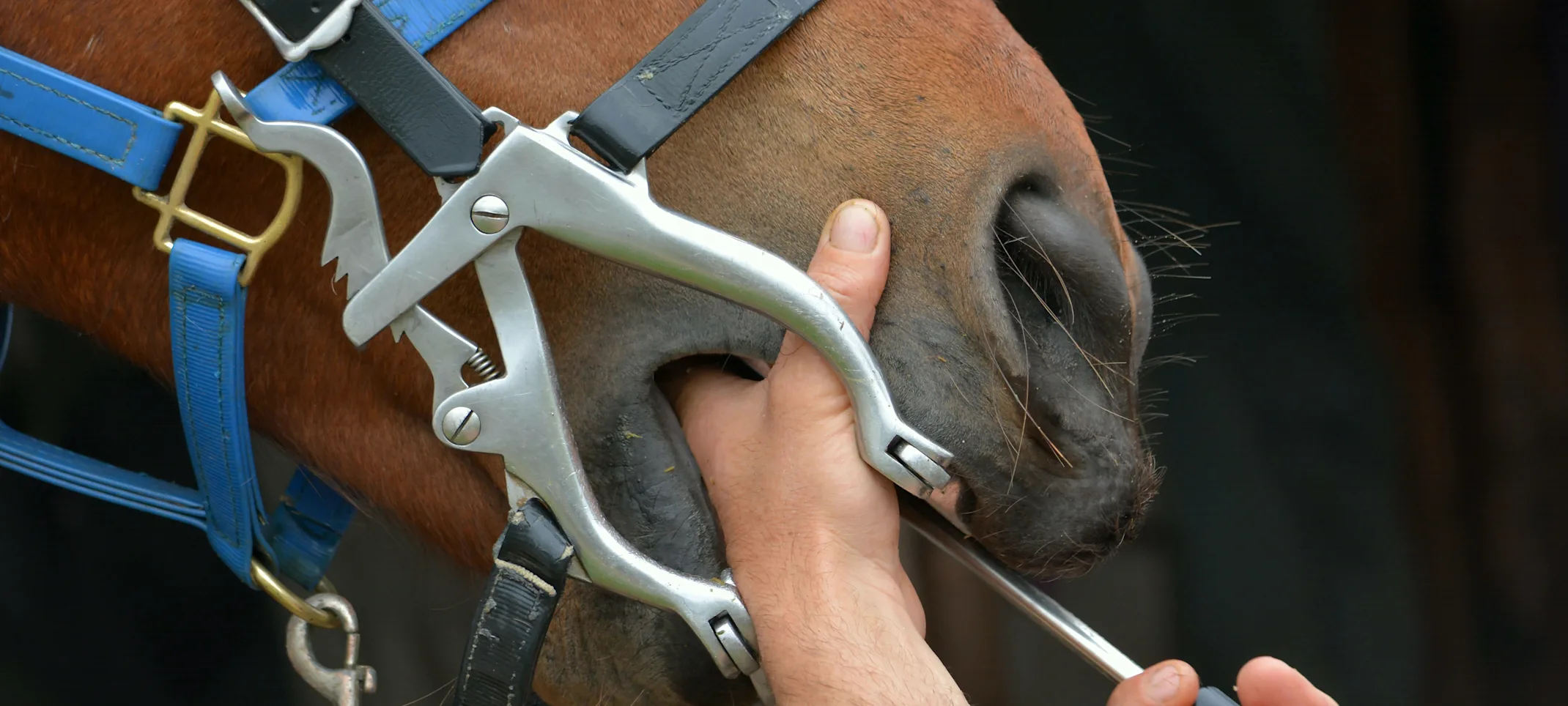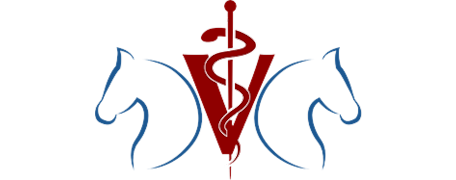Blauner Buchholz & Associates
Thorough Oral Exam
A thorough oral exam allows your veterinarian to get a good look at all the structures inside the mouth including the teeth, cheeks, gingiva, palate, tongue, and bars. This is important to do annually in order to prevent dental problems from interfering with your horse’s performance and for maintaining proper weight and digestion. Many dental problems can be corrected if caught early but can be much more difficult to treat if allowed to progress.
A thorough oral exam is almost always conducted with sedation. This helps the horse relax and hold still so the veterinarian can observe the inside of the mouth carefully. The mouth is first flushed out, with either water or dilute antiseptic, to remove any feed material that the horse may be holding. Then the mouth is opened with a speculum, a tool that allows wide and safe access to the mouth. The horse’s head will be either held by an assistant or rested on a padded dental halter hung from a crossbeam. The veterinarian uses a bright light and a mirror to examine the inside of the mouth, exploring all sides of the teeth and checking under the tongue and along with the soft and hard palates and cheeks for any abnormalities. You may notice your veterinarian using a probe to test the depth of any cavities or periodontal pockets that are identified.
We look for foreign bodies, gingivitis, wounds, foxtail damage, or other signs of inflammation or infection. We also look for dental abnormalities, including sharp points, hooks, ramps, waves, step teeth, loose teeth, fractured teeth, extra teeth, missing teeth, diastemata, and misalignments. When the oral exam is completed, your veterinarian will recommend an appropriate treatment plan, which may include floating, radiographs, extractions, or nothing at all depending on the exam.
Oral Balance AKA Floating
Blauner, Buchholz and Associates offer floating services using both power tools and hand tools. Floating is the process of filing down only the sharp points that are likely to damage the horse’s mouth. Floating can also be used to help re-align teeth that have begun to shift in pathological ways if the shifts are caught early enough. Most patients are sedated prior to floating for a thorough oral exam.
Horses have teeth that are well-adapted to their natural diet of forage. They start their lives with most of their teeth submerged under the gumline and as they chew and wear their teeth down, more tooth erupts. This process continues over time until eventually, the horse runs out of the tooth. However, the teeth do not wear evenly. All horses have bottom jaws that are slightly narrower than their upper jaws. This means that as they chew, the inside edge of the bottom teeth and the outside edge of the upper teeth wear less than the rest of the teeth and they become sharp. These sharp edges can quickly feel painful and begin cutting the horse’s cheeks and tongue. This process is even more pronounced in horses that have misaligned teeth, such as overbites or underbites, or have had broken jaws or other trauma to the head. To prevent these sharp points from damaging the inside of our horses’ mouths, we float the teeth. After a thorough oral evaluation and in consideration of your horse’s history and life stage, your veterinarian may recommend an exam and floating at intervals of every 6 months to one year.
Dental Radiographs
Dental radiographs (X-rays) are a vital part of assessing tooth and sinus problems. Blauner, Buchholz and Associates veterinarians are trained to take these specialized views to obtain the information necessary to help you make fully informed decisions about your horse’s dental care.

